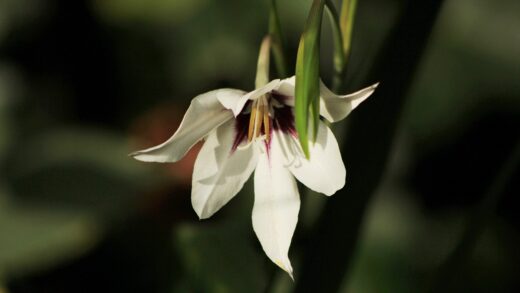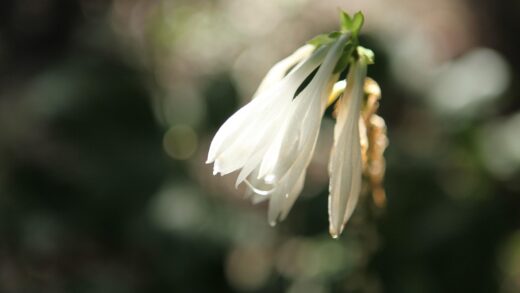The practices of pruning and cutting back are fundamental to cultivating a coleus plant that is not only healthy but also aesthetically pleasing. Coleus have a natural tendency to grow upwards, and if left to their own devices, they can become tall, sparse, and “leggy,” with long stems and leaves concentrated at the top. Regular trimming, often referred to as “pinching,” is the key intervention that encourages the plant to develop a dense, bushy, and well-rounded form. This simple act of removing the growing tips stimulates the dormant buds located at the leaf nodes further down the stem, prompting them to sprout and form new branches. This creates a much fuller and more attractive specimen, maximizing the impact of its colorful foliage.
The primary goal of pruning coleus is to control its shape and size. By selectively removing stems, the gardener can guide the plant’s growth to fit a specific space or design. This is particularly important for plants grown in containers or as part of a mixed planting, where maintaining a balanced composition is crucial. Regular pinching from a young age establishes a strong, multi-branched framework, which forms the foundation of a robust and shapely plant. This proactive approach is far more effective than trying to correct a leggy, overgrown plant later in the season.
Another critical reason for trimming coleus is to prevent flowering. As the plant matures, especially during the long days of summer, it will attempt to produce flower spikes. While the small blue or white flowers are not unattractive, allowing the plant to flower and set seed is detrimental to the quality of the foliage. The flowering process signals a shift in the plant’s energy allocation, moving resources away from leaf production and towards reproduction. This often results in smaller leaves, less intense coloration, and a general decline in the plant’s vigor. Promptly removing flower spikes as soon as they are noticed is essential for keeping the foliage at its peak.
Pruning is also a vital tool for rejuvenating an older or neglected coleus. A plant that has become overgrown and leggy can often be salvaged with a more drastic “hard prune.” This involves cutting the main stems back significantly, which can feel dramatic but often stimulates a fresh flush of dense new growth from the base of the plant. Furthermore, the pieces that are pruned off a coleus plant are not waste; they are perfect material for propagation. Every stem tip that is pinched or cut off can be easily rooted in water or soil to create a new plant, allowing gardeners to multiply their stock of favorite varieties for free.
The tools for pruning coleus are simple. For the routine task of pinching back soft new growth, the thumb and forefinger are often all that is needed. This soft pinch is easy and can be done anytime you are inspecting the plants. For thicker, more mature stems or for a more significant cutback, a clean, sharp pair of small pruning shears or scissors is ideal. Using sharp tools ensures a clean cut that heals quickly and reduces the risk of crushing the stem tissue, which can create an entry point for diseases.
The technique of pinching
Pinching is the specific term for removing the very tip of a growing stem on a coleus plant. This is the most important and frequently performed type of pruning for maintaining a bushy habit. The technique involves locating the top set of new leaves at the end of a branch and pinching it off right above a lower set of leaves. This removal of the apical meristem (the primary growing point) breaks the stem’s apical dominance, which is the hormonal signal that suppresses the growth of side shoots.
Once the dominant growing tip is removed, the plant redirects its growth hormones to the axillary buds located at the nodes just below the pinch. A node is the point on the stem where a leaf or a pair of leaves is attached. These previously dormant buds are then stimulated to grow, each one typically producing a new branch. This means that for every single tip that is pinched off, two new branches will form in its place, effectively doubling the density of the plant in that area over time.
The process of pinching should begin when the coleus plant is young, often when it has reached a height of about 15 centimeters (6 inches). By starting early and repeating the process regularly throughout the growing season, a dense, well-branched framework is established from the beginning. It is best to pinch back the stems every few weeks, or whenever a branch has grown a few new sets of leaves. This consistent attention prevents the plant from ever getting a chance to become leggy.
Pinching can also be used strategically to shape the plant. If one side of the plant is growing more vigorously than the other, you can pinch the stems on the taller side more aggressively to slow their growth and allow the other side to catch up, resulting in a more symmetrical and balanced appearance. This simple, ongoing maintenance is the secret to achieving those perfectly mounded, lush coleus specimens seen in professional garden displays. It is a small but continuous effort that pays huge dividends in the plant’s final form.
Removing flower spikes
The removal of flower spikes is a crucial pruning task for maintaining the ornamental quality of a coleus. The plant’s primary value lies in its foliage, and the process of flowering detracts from this. As soon as you see the first sign of a flower stalk emerging from the tip of a stem—it will look different from the emerging leaves, often like a thin, squarish spire—it should be removed. The longer it is left on the plant, the more energy the plant diverts to it.
To remove a flower spike, simply follow the stalk down to the first set of full-sized leaves below it and pinch or snip it off at that point. This not only removes the impending flower but also functions as a “pinch,” encouraging the plant to branch out from that point, just as removing a vegetative tip would. This “deadheading” is a continuous task during the summer months, as the plant will repeatedly try to bloom in response to the long daylight hours.
Some gardeners may be tempted to let the plant flower, perhaps out of curiosity. However, the consequences for the foliage are almost always negative. Once a coleus plant is allowed to flower and expend energy producing seeds, it often enters a state of decline. The lower leaves may start to drop, the overall growth can become sparse, and the vibrant colors may fade. The plant has effectively completed its life cycle from its perspective, and its vegetative vigor wanes.
While some modern coleus cultivars have been bred to be “late-flowering,” reducing the need for constant deadheading, most varieties will still attempt to bloom at some point. Making a habit of inspecting your plants every few days for developing flower spikes and removing them promptly is one of the most effective ways to prolong the plant’s peak beauty throughout the entire growing season, keeping the focus entirely on its spectacular leaves.
Hard pruning and rejuvenation
A hard prune, or rejuvenation pruning, is a more drastic measure used to restore an overgrown, leggy, or sparse coleus. This is often necessary for plants that have not been regularly pinched, or for overwintered plants that have become stretched and weak due to low winter light. This technique involves cutting the main stems back significantly, leaving only a few nodes or sets of leaves near the base of the plant. While it can look severe, a healthy coleus will respond with a vigorous flush of new growth.
The best time to perform a hard prune is in the spring or early summer when the plant is in a state of active growth and has the energy reserves to recover quickly. For overwintered plants, this is often done in early spring, just as they are beginning to show signs of new growth. For a garden plant that has become unruly mid-season, a hard prune can be done in summer, although it will take a few weeks for the plant to fill out again. After a hard prune, it is beneficial to provide a dose of balanced, water-soluble fertilizer to support the new growth.
When making the cuts, use clean, sharp pruning shears. Cut each main stem back to about 10-15 centimeters (4-6 inches) from the base, making sure to leave at least two or three nodes on each remaining stem. It is from the dormant buds at these nodes that the new growth will emerge. This heavy cutting back removes all the leggy, weak growth and essentially resets the plant, forcing it to grow back in a much more compact and dense form.
The stems removed during a hard prune are an excellent source of propagation material. The top, healthier sections of the cut stems can be turned into numerous cuttings. This means that from one overgrown plant, you can not only rejuvenate the original but also create dozens of new plants to fill other areas of the garden or to share. This turns a simple maintenance task into a highly productive and rewarding activity.
Pruning for propagation
Every pruning cut made on a coleus is an opportunity for propagation. The ideal material for a cutting is a healthy stem tip that is about 10-15 centimeters (4-6 inches) long and is not flowering. The soft-tip cuttings taken during routine pinching are perfect for this. When you pinch off the top set of leaves to encourage bushiness, that small piece can be rooted to start a new plant. This makes it easy to create a continuous supply of new plants throughout the season.
To prepare a cutting for propagation, remove the leaves from the lower half of the stem. This is the portion that will be placed in the rooting medium (water or soil), and removing the leaves prevents them from rotting. If the remaining leaves at the top are very large, they can be cut in half to reduce the surface area for water loss through transpiration, which helps the cutting stay hydrated while it is developing roots.
The cuttings can then be placed in a glass of water, ensuring the bare nodes are submerged, or planted directly into a pot of moist potting mix. Roots typically form quickly, often within one to two weeks. This simple and reliable method of propagation allows gardeners to easily increase their stock of favorite cultivars, ensuring they have plenty of plants for mass plantings, container combinations, or to overwinter for the next season.
This synergy between pruning and propagation is one of the most satisfying aspects of growing coleus. Pruning is not about discarding parts of the plant, but rather about shaping the parent plant while simultaneously creating new life. It is a sustainable cycle that allows a single plant purchase to result in a garden full of vibrant color for years to come. This makes coleus not only a beautiful ornamental but also an exceptionally economical and rewarding plant to cultivate.


















